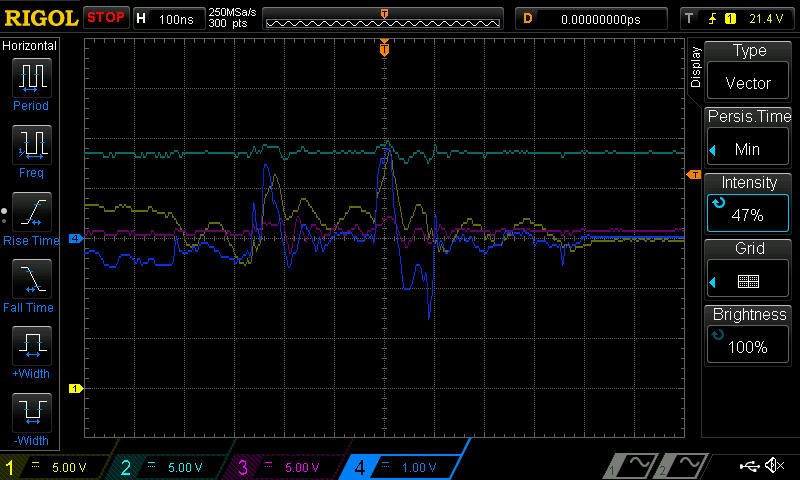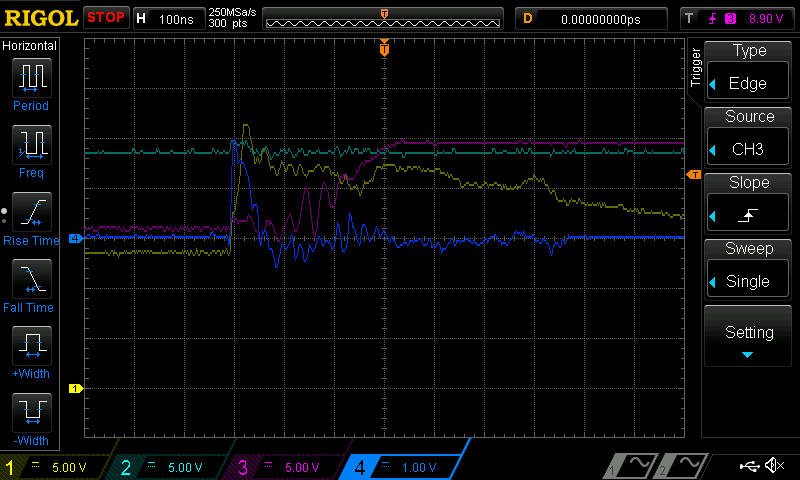Other Parts Discussed in Thread: TIDA-00302,
We have a design with 3 INA200-circuits monitoring 3 separate outputs. The system power is 14V.
Due to the load characteristics, transients of about 28V (limited by transient protectors) are created when the load is switched off. This leads occasionly to that one of the INA circuits indicates overcurrent on the CMP output. This condition occurrs about 4 times out of 10, and affects the circuits randomly, even the ones with no load attached.
Vss feeding the circuits is a stabilized 8V and looks clean.
We have tried to lower the limit of the transient protection down to 15V, and this leads to a significant improvement. In this case, only the circuit that is connected to the load is affected.
Our guess is that a rapid increase in the Vin+ and Vin- relative to Vss is the cause of the problem.
We also noted, that if the feeding power voltage (Vss) is increased, leading to a smaller difference between the feeding voltage and the peak transient voltage, the problems diminished in the same way as if the transient protection voltage limit was lowered.



